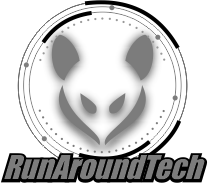In recent years, the integration of cutting-edge technologies, such as artificial intelligence (AI), the Internet of Things (IoT), and robotics, has been instrumental in driving significant changes. These advancements have enabled manufacturers to optimize processes, reduce waste, and enhance quality control, leading to substantial cost savings and higher profitability.
The journey of manufacturing from traditional methods to highly sophisticated automated systems marks a significant leap forward. Learning about the newest manufacturing technology revolutionizing the industry will help you understand these changes and their profound impact on the industry.
Additive Manufacturing
Additive manufacturing, commonly known as 3D printing, keeps revolutionizing the production process by enabling the creation of complex geometries that would be impossible to achieve with traditional methods. This technology allows manufacturers to produce parts directly from digital models, reducing material waste and shortening lead times. Industries such as aerospace, automotive, and healthcare use additive manufacturing to produce lightweight components, customized implants, and prototypes swiftly and cost-effectively.
Internet of Things
The Internet of Things transforms manufacturing facilities into smart factories. By embedding sensors for connectivity in machinery and equipment, businesses use IoT devices to enable real-time monitoring and data collection. This connectivity facilitates better decision-making through predictive maintenance, energy management, and optimized supply chain logistics. Manufacturers can preemptively address potential issues, minimize downtime, and streamline operations.
Automation and Robotics
Automation has always been the foundation of manufacturing, but recent advancements in robotics are taking it to new heights. Modern robotic systems have sophisticated sensors and AI capabilities, allowing for more complex and precise tasks. One robot that exemplifies this advancement is the Cartesian robot, a type of linear robot that operates on two or three axes to provide high precision and repeatability. Their applications range from simple pick-and-place operations to complex machining tasks, which significantly enhance production efficiency.
Artificial Intelligence and Machine Learning
Artificial intelligence and machine learning (ML) are at the lead of the manufacturing technology revolutionizing the industry. These technologies analyze large datasets to identify patterns and make predictions that can optimize production processes. AI-driven quality control systems can detect defects with unprecedented accuracy, while ML algorithms can forecast demand and adjust production schedules accordingly. The result is a more agile manufacturing process capable of responding swiftly to market changes while maintaining high levels of quality and efficiency.
Augmented Reality and Virtual Reality
Augmented reality (AR) overlays digital information onto the physical world, assisting technicians in performing complex tasks with greater accuracy. AR can guide assembly line workers with real-time instructions, reducing errors and improving productivity. Virtual reality (VR) provides immersive training environments where employees can practice their skills without the risks associated with real-world operations. Together, AR and VR can enhance workforce capabilities and safety in manufacturing environments.
The manufacturing industry is undergoing a radical transformation driven by cutting-edge technologies. The integration of advanced robotics, additive manufacturing, IoT, AI, and AR/VR is revolutionizing traditional manufacturing processes, resulting in increased efficiency, reduced costs, and improved product quality.

